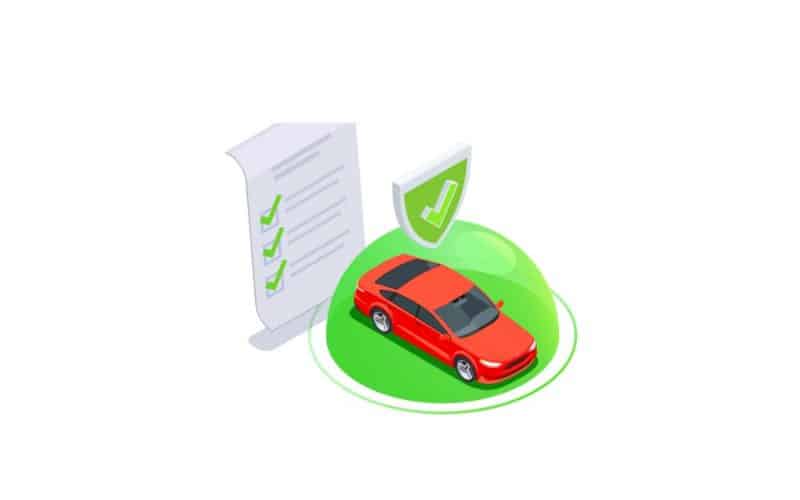Your car insurance premium is the amount you pay your insurance company on a regular basis, often every month or every six months, in exchange for insurance coverage. Once you’ve paid your premium, your insurer will pay for the coverages detailed in the insurance policy, such as liability and collision coverages.
Every insurance company determines its rates differently, but your premium is usually based on details about you, the type of car you own and the coverages you select.
What is my car insurance premium?
A car insurance premium is the cost of your auto insurance policy and is sometimes called an insurance rate. Your total premium amount may cover you for six months or a year, depending on the policy length options your company offers, but you can typically pay your premium quarterly or monthly rather than as a lump sum.
The national average premium for a full coverage car insurance policy in 2023 is $2,014 per year, according to Bankrate’s study of average rates from Quadrant Information Services. The minimum coverage average is $622 per year.
An insurance premium is what keeps your policy in force. As long as you continue paying the auto insurance premiums on time and meet the terms of your policy, your insurance company ensures financial protection for you and your vehicle in the event of a covered loss. If you stop paying the premium, the insurer has the right to cancel your policy after a certain period.
Once your car insurance company cancels your policy, your coverage terminates, which may leave you with a lapse of coverage if you don’t secure other coverage beforehand.
When do you pay a car insurance premium?
How often do you pay for car insurance? It depends. When it comes to payment plans, your company probably has several options. You can usually pay your premium in full or in installments, usually monthly, quarterly or semi-annual, depending on the length of the policy term. You typically get the best rate on insurance when you pay in full and avoid installment and processing fees.
There are a few things you might want to consider before choosing a payment plan. Although you may save money by paying your premium in full, you may want to consider installments if this lump sum will cause you financial hardship.
Most companies will allow you to change your payment plan in the middle of your policy term, too. Perhaps you’d like to start your policy on a monthly payment plan, but later on, find that paying in full makes more sense. If you have specific questions regarding your payment plan options, you may find it helpful to contact your insurance agent.
An insurance premium is the amount of money an individual or business pays for an insurance policy. Insurance premiums are paid for policies that cover healthcare, auto, home, and life insurance. Once earned, the premium is income for the insurance company. It also represents a liability, as the insurer must provide coverage for claims being made against the policy.
Failure to pay the premium on the individual or the business may result in the cancellation of the policy.
When you sign up for an insurance policy, your insurer will charge you a premium. This is the amount you pay for the policy. Policyholders may choose from several options for paying their insurance premiums. Some insurers allow the policyholder to pay the insurance premium in installments—monthly or semi-annually—while others may require an upfront payment in full before any coverage starts.
The price of the premium depends on a variety of factors, including:
- The type of coverage
- Your age
- The area in which you live
- Any claims filed in the past
- Moral hazard and adverse selection
How are car insurance premiums determined?
Car insurance premiums are highly personalized. There are a number of factors that providers use to calculate your unique rate, and these vary based on state laws. Some of these factors you can control, and others you cannot.
Here are some of the things that impact your car insurance premium:
Your driving record
Your driving record is one of the biggest factors determining your car insurance premium. A driving record includes your history of at-fault car accidents and moving traffic violations, such as speeding tickets.
Drivers with recent at-fault accidents and major traffic violations will pay more for coverage than good drivers. When setting car insurance rates, your insurer usually reviews the last three to five years of your driving record, depending on your state.
Expect your car insurance rates will go up after a speeding ticket. A driver with a speeding ticket pays 24% more, or about $380 per year, compared to a driver with a clean driving record, according to a Forbes Advisor analysis.
You can also expect car insurance rates to increase after an accident if you are at fault. The average increase for accidents with property damage is 45%, and 47% for accidents that result in injuries, according to a Forbes Advisor analysis.
Your auto insurance coverage selections
The coverage you choose is also a major factor in deciding car insurance rates. The main types of car insurance are liability, collision and comprehensive, and uninsured motorist coverage. Don’t skimp on coverage that you need just to save money. That mistake could cost you in the long run.
For example, your state’s minimum liability car insurance requirement is likely, not sufficient. If you cause a car accident with multiple injuries, you could quickly exhaust the policy limit, which means you’ll get stuck paying out of pocket for others’ medical expenses and other bills. Generally, you want to buy enough liability insurance to cover what you could lose in a lawsuit, such as your savings.
Your car insurance deductible
A car insurance deductible is the amount of money deducted from an insurance check when you file a claim, such as a collision or comprehensive insurance claim. For example, if your vehicle repair estimate is $2,000 and you have a $500 deductible, you’ll get an insurance check for $1,500.
Generally, the higher your deductible, the less you pay in car insurance premiums. That’s because your insurer will pay less if you file a claim.
There is no car insurance deductible for liability claims made against you if you cause an accident.
Where you live
Your ZIP code is another important pricing factor. Drivers who live in cities usually pay more than drivers in the suburbs due to higher rates of car accidents, theft and vandalism. Your insurer also looks at your region’s weather-related claims (such as hail).
Other location-related factors include:
- The cost of medical care
- Car repair costs
- The frequency of car accident lawsuits
Your credit
Many car insurance companies look at your credit-based insurance score to help determine your rates in states where it’s allowed. California, Hawaii, Massachusetts and Michigan ban the use of credit in setting car insurance prices.
The type of vehicle you drive
The make and model of your vehicle is another car insurance pricing factor. Your insurer looks at past claims from similar models to evaluate repair costs, payments made for comprehensive claims and theft rates.
Your age and driving experience
Young and inexperienced drivers will pay more for car insurance because they’re more likely to get into a car accident. Car insurance rates for young drivers start to go down around age 25. You tend to enjoy the best rates in your 40s and 50s, but your rates begin to creep back up again around age 65.
Other car insurance pricing factors
Car insurance companies also often look at non-driving factors when setting rates, such as:
- Whether you own your home
- Education level
- Occupation
- Marital status
- Gender
The use of non-driving factors for car insurance rates is controversial. Some consumer advocacy groups have raised concerns that this practice is inherently discriminatory.
How much is a car insurance premium?
Nationally, the average cost for “full coverage car insurance” is $1,569 per year. This is according to a Forbes Advisor analysis of car insurance rates among large insurance companies. Your costs will vary depending on what type of coverage you choose and other cost factors.
How often do I need to pay a car insurance premium?
You typically have the option to pay your car insurance premium in monthly installments, bi-annually or annually, depending on your insurance company.
Most car insurance companies offer a pay-in-full discount. Pay-in-full discounts can often range from 6% to 14%, according to a Forbes Advisor analysis.
How do I pay a car insurance premium?
You can typically pay a car insurance premium by credit card, debit card, checking account or savings account. Your insurer might offer the following payment options:
- Online
- By phone
- By mail
If you pay your car insurance premium in installments and have your payment automatically withdrawn, you can usually get an electronic funds transfer (EFT) discount between 3% and 6%.
What happens if I don’t pay my car insurance premium?
If you do not pay your car insurance premium, your policy will eventually be canceled for non-payment.
Your auto insurer is typically required to send you notice by mail or email before canceling your policy, depending on your state. You usually have between 10 to 20 days to make a late payment, depending on your state.
If your policy is canceled, you have an insurance lapse, which can cost you even more money when you buy another policy. And if you get caught driving without car insurance, you could face steep financial and legal consequences.
If you can’t afford to make a car insurance payment, contact your insurer as soon as possible. Your insurer may be willing to extend the grace period or set up a payment plan.
How can I lower my car insurance premium?
Here are some steps you can take to reduce your car insurance premium.
- Shop around. The best way to save is often to compare car insurance quotes among multiple insurers. Rates can vary by hundreds of dollars for the same coverage, so shopping around is an easy way to find out if you’re overpaying.
- Ask for discounts. You may be eligible for car insurance discounts, such as safe driver discounts or good student discounts.
- Take a defensive driving course. A state-approved driving course could help reduce any points you may have accumulated on your driving record for traffic citations, translating into cheaper car insurance. Some insurers offer discounts to drivers who have completed a driving safety course. And in some states, a discount is mandated for drivers at a certain age who do a safety course, such as age 55.
- Increase your deductible. You can save money by choosing a higher deductible for collision and comprehensive insurance. Just be sure you can afford to cover higher out-of-pocket costs if you need to file a car insurance claim.
Which companies have the cheapest car insurance premiums?
On average, USAA auto insurance has the cheapest car insurance, according to a Forbes Advisor analysis of the best cheap car insurance companies. But USAA auto insurance is only available to active members of the military, veterans and their families.
If you don’t qualify for USAA, our analysis found that Geico, State Farm, Erie and Travelers offer competitive rates based on nationwide averages. It’s a good idea to also get quotes from other insurance companies because the cheapest companies can vary depending on your state, driving record and other factors.
What’s the difference between a car insurance premium and a car insurance quote?
A car insurance premium and a car insurance quote are not the same. Here’s the main difference:
- Car insurance premium: The actual amount you pay the car insurance company for coverage.
- Car insurance quote: The estimated cost of a car insurance policy.
Your car insurance premium may be higher than what you were originally quoted online. An insurance company bases your quote on the information that you provide, but the final premium could vary for several reasons, such as:
- Your driving history. If you forget to mention a speeding ticket, your final premium will be higher than your initial quote. Your insurer will check your driving record when finalizing your premium.
- Your car’s vehicle identification number (VIN). Your quote will be based on the year, make, and model of your car, but your insurer will need your VIN to finalize the premium.
- You added more coverage or changed the deductible. Your premium could be higher than the initial quote if you decide to buy higher policy limits, add optional coverage types or lower your deductible.
- Your credit. Insurers will usually take a look at your insurance-based credit score, which could significantly impact your premium. The use of credit in auto insurance rates is banned in California, Hawaii, Massachusetts, Michigan and Washington.
Car insurance premium vs. car insurance deductible
Here’s the key difference between a car insurance premium and a deductible
- Car insurance premium: The amount you pay for a car insurance policy.
- Car insurance deductible: The amount deducted from an insurance check if you file a claim.
What causes increase in car insurance premiums?
Your car insurance premium could go up when your policy is renewed. Here are some common reasons you might see an increase:
- You were at fault for a car accident.
- You received a moving traffic violation.
- You made a car insurance claim.
- You added another vehicle to your policy.
- You added another driver to your policy.
- There was an increase in claims in your area (such as car theft or weather-related claims).
- You moved to a new ZIP code.
- You had a lapse in coverage.
- You’re no longer eligible for certain discounts.
Not all car accidents increase your car insurance premium. For example, if your car was hit while parked or you were rear-ended at a red light, you won’t get hit with a rate increase.
How to save on car insurance premiums
Although car insurance can be expensive, there are many ways that you may be able to lower your rate. Here are some potential options for getting a cheaper car insurance premium:
Shop around and compare quotes
Since the price of car insurance varies by insurer and each company has its own proprietary rating algorithm, your premium may vary greatly depending on the company you choose. To find the cheapest company for your specific circumstances, you may want to compare quotes across various carriers.
Most insurance professionals recommend comparing quotes for the same coverage types and limits across carriers to get the most accurate comparison.
Apply discounts
Almost every insurance company offers discounts that might lower your premium. Some discounts are more significant than others. You may want to review the discounts each carrier offers when comparing quotes. Discounts are commonly available for being a good student, remaining claims-free, driving a car with strong safety ratings and bundling your insurance policies.
You may also qualify for a discount if you pay your premium in full, enroll in paperless billing or set up autopay.
Check your coverage
There are many different types of car insurance coverage, and the more you have, the higher your insurance premium typically is. Higher coverage limits also typically increase your premium. If price is a concern, you may want to review your policy to ensure you’re only paying for the coverage types that you need and check for duplicate coverage.
For instance, you might already have roadside assistance through your credit card provider.
Recommended Articles
- Can You Insure a Car Not in Your Name: Everything You Need
- WHAT AGE DOES CAR INSURANCE GO DOWN? Detailed!
- Elephant Car Insurance Review: Comprehensive Guide
- Montana Car Insurance: Coverage, Cost & Top Providers
- Car Insurance Calculator: How To Estimate Your Cost
- HOW DOES CAR INSURANCE WORK: The Complete Guide






